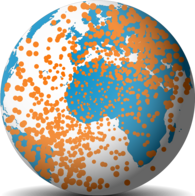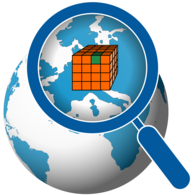Big Data Analytics
We are a group of computer scientists with ten years of experience developing data exploration and analysis methods in interdisciplinary research projects for
- detecting relationships in heterogeneous data sets,
- extracting relevant structures and patterns from large data sets,
- exploring n-D data spaces, and
- explaining the predictions/estimations of machine learning models to users.
Our research is motivated by real-world scientific applications such as remote sensing , fluid systems modeling, and Earth system modeling.
We adopt computer science methods from
- machine-learning/artificial intelligence,
- interactive visualization,
- scientific workflows, and
- component-based software development
to the specific requirements of real-world scientific applications.
Our research is grounded in computer science, but we develop our methods in close cooperation with users of the methods. To develop our methods, we engage in a "dialogue" with scientists by conducting a user and task analysis.
Find Relations among heterogeneous data

Geoscientists make use of data from sensors, geoarchives (such as core samples), and simulations to study the system Earth. The data describe Earth processes on various scales in space and time and by many different variables. Our methods facilitate the comparison of data from different sources and the integrated analysis of the heterogeneous data.
Research & Technologies:
- Comparison of ocean model output with reference data
- SLIVisu – Visual analysis methods to validate simulation models
- Visual exploration of categorical data in lake sediment cores
- ENAP - Enhancing scientific environmental data by using volunteered images in social media
- Digital Earth - Scientific workflows for interdisciplinary data analysis
Extract relevant information from large data sets

Current simulation models as well as observation systems generate large quantities of data. Our methods extract the important information from these data and present it in a compact and efficient manner to scientists.
Research & Technologies:
Exploration of multi-dimensional data

Geoscientists need to understand the behavior of Earth system processes based on multi-dimensional data. Our solutions enable scientists to explore spatio-temporal data to detect relevant information from multi-dimensional data.
Research & Technologies:
Explainable AI (XAI)
![[Translate to English:] GFZ](/fileadmin/_processed_/f/4/csm_xai_logo_4d3d47a454.png)
Our XAI methods combine algorithms that capture critical information about AI methods' decisions with interactive visual exploration methods to explore the "what, why, and how" aspects of AI methods' decisions and behavior. We provide practitioners with access to these XAI methods through our ClarifAI system. ClarifAI provides several XAI methods and components:
a) interactive exploration of hyperparameter spaces,
b) interactive exploration of model behavior using hypothetical scenarios, and
c) interactive exploration of concepts learned by AI methods.


